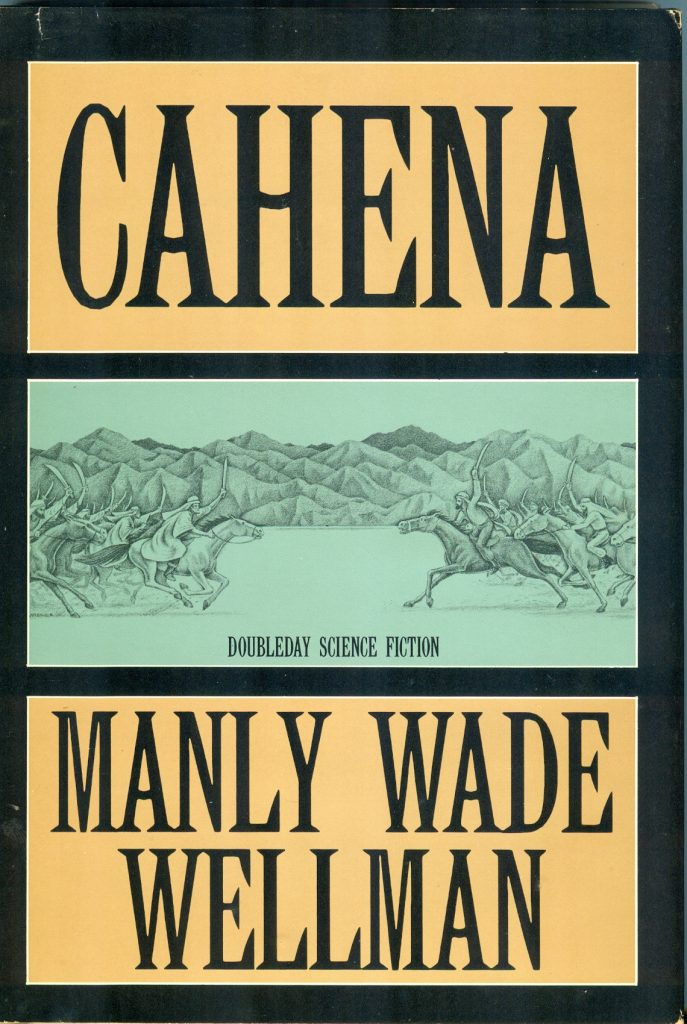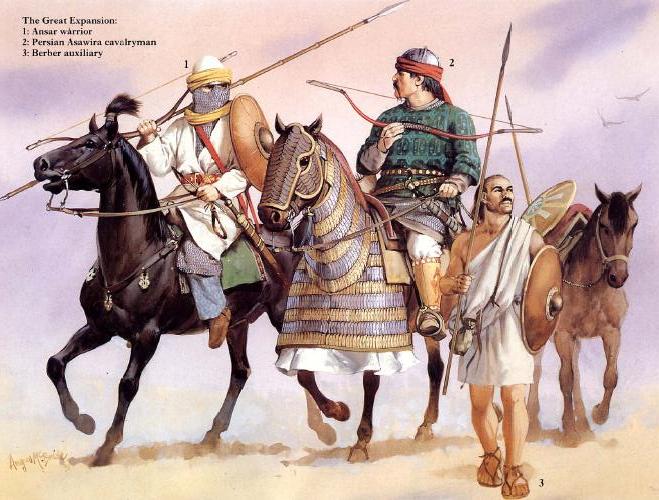
Manly Wade Wellman’s last novel, Cahena¸ was published posthumously in late 1986. I got my copy, again from Weinberg Book in early 1987. This was another Doubleday hardback. The spine on the dustjacket has “Doubleday Science Fiction.” I remember getting sucked in and blowing through the novel.
Cahena is an historical novel set in North Africa at the beginning of the 8th Century A.D. Wulf the Saxon is a mercenary in Byzantine service. He escapes from Carthage into the surrounding countryside when the Moslems take the city. He falls in with the Berbers. The Berbers, that forgotten branch of the Caucasoid race who inhabited North Africa from the borders of Egypt to the Atlantic Ocean, from the shore of the Mediterranean to the Niger River. Most are of the Mediterranean type though some blond and red-haired Kabyles and Rifs inhabit the Atlas Mountains.
Gibbon had this to say about the Berbers during the dissolution of the Western Roman Empire when Gaiseric’s Vandals crossed from Spain to Mauretania:
“The parts of Mauritania which border on the great desert and the Atlantic Ocean, The Moors were filled with a fierce and untractable race of men, whose savage temper had been exasperated rather than reclaimed by their dread of the Roman arms.”
The Berbers resisted the Vandals, fought against the Byzantines, and in this story fight the Moslems. The Arabs united under Islam erupted out of Arabia at the most fortuitous time. The Byzantines and Sassanid Persians had just bled each other white in a 25 years long war. The Sassanids went under completely while the Byzantine Empire was amputated province by province. Two peoples in history created immense empires in a short period of time: the Moslem Arabs and the Mongols. It is not a coincidence that both were barbarians united under a charismatic leader. They were inured to hardship while having great if not genius generals leading them.
Daia al Cahena, sorceress and prophetess leads the Berbers against the Arabs. The Berbers were as tough as the Moslem Arabs but not as well equipped in weapons and armor and not as organized. Wulf becomes Daia Cahena’s lover in the story. A woman’s fickleness proves to be the undoing of gains made. The novel is only 182 pages long, but Wellman packed a lot into it. There are three battles that are very well done. Wellman does make the common mistake of having the Arabs wielding scimitars. They were still using straight swords (the sayf). What we think of as the scimitar would not become a standard weapon until used by the Safavid Persians in the early 16th Century. The Turks would introduce curved swords more on the lines of sabers but that is a good 150 years in the future at the earliest. I don’t let that get in the way of enjoyment of the novel. Wellman went out on top.
About fifteen years ago, I thought about Cahena and the battles. I got the idea that Karl Edward Wagner might have had a part in the novel. David Drake told me that Wellman had been researching and working on Cahena going back to the 1940s. If Karl Wagner was involved, he was unaware and doubted it. I pulled out the Necronomicon Press edition of the round-robin novel Ghor, Kin-Slayer reread it. In fact, I wrote a chapter by chapter description of it for the old REHUPA.com website blog. The Wellman chapter was one of the better chapters and the feel was like Cahena. The action scenes were by the same writer. My conclusion, Wellman could write a blood and thunder scene when he wanted to.
This is an historical novel but there is a supernatural event that is quite spooky. As shown in the contents in The Valley So Low, Wellman’s skills were even greater later in life writing about the macabre.
There was never a paperback edition of Cahena. Had the novel been published ten years earlier, there might have been. Paperbacks were getting thicker with glossy, static covers in the late 1980s. It might have had a chance had it been marketed as a sword-and-sorcery novel, but the Great Sword-and-Sorcery Extinction Event had happened. As a result, Cahena became a sort of lost novel.
That is about to change. DMR Books is reprinting Cahena as a paperback on November 3rd. I don’t often return to novels, this is one of them.

Moslem Warriors 7th Century A.D.
I hope this heralds a Wellman renaissance. He deserves it.
Wow, thanks for all you do. I read the back article on the sword and sorcery apocalypse of the 80s. I imagine it was some sort of proto wokeism thing against “toxic masculinity” of all those barbarians. Say, the author mentioned a short fantasy collection of Poul Anderson. A link or title would be much appreciated.
CAHENA is one of the best examples of “going out on a win” in the history of SFF, definitely so in the “veteran/mature author” category. Sure, some authors who died young went out having just published some of their best work, but it’s rare for an author over 60 to pull it off. CAHENA is quality historical adventure/borderline S&S. Personally, I consider it equal to, if not better than, Wellman’s Kardios and Hok tales. His scenes of combat are well-done and there are layers of insight and complexity that I don’t always find in some of MWW’s other (otherwise cool) action-adventure fiction. In my opinion, Manly saved some of the best for last.
“This is an historical novel but there is a supernatural event that is quite spooky.”
Yep. Pretty damned spooky. IMO, that chapter makes CAHENA at least a borderline S&S novel. There is more of a supernatural element in CAHENA than in Howard’s “Rogues in the House” or “Swords of the Purple Kingdom”, both of which are considered S&S.
Cahena was a great story, Wellman was a great writer. Glad to see this post.